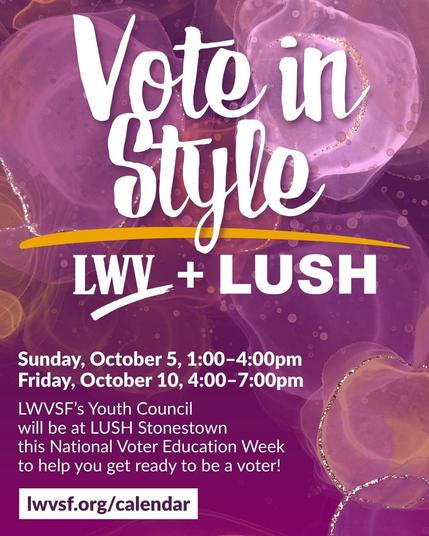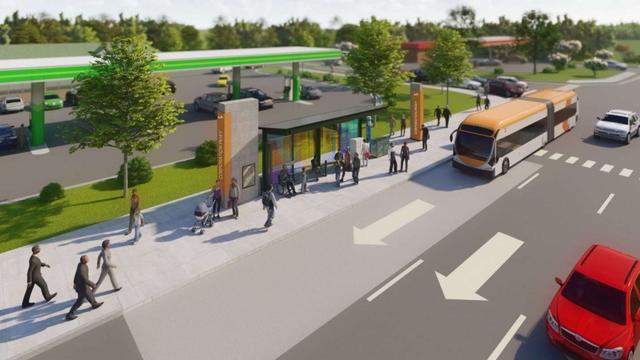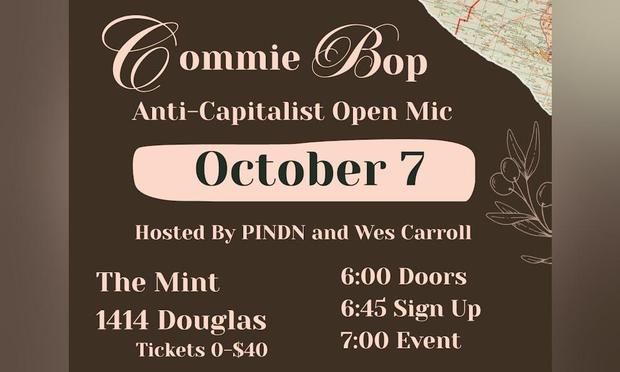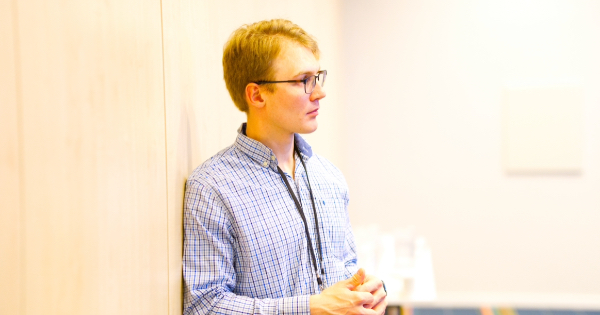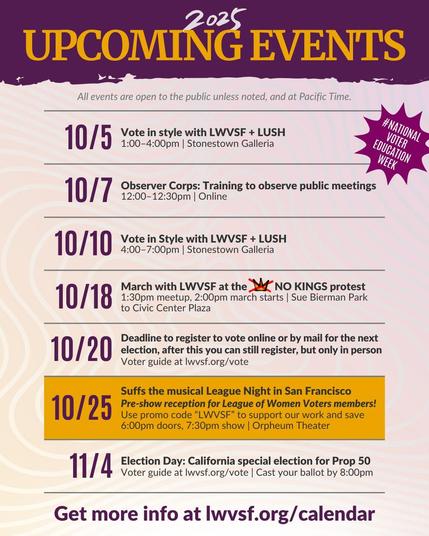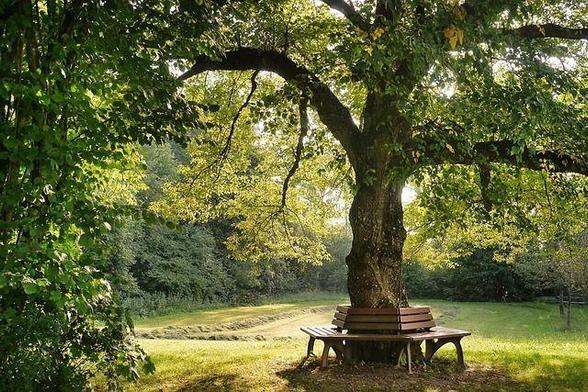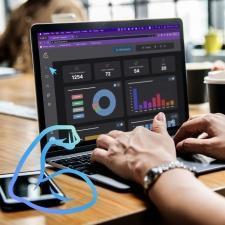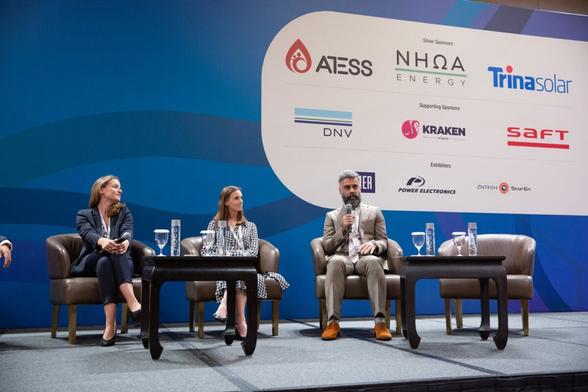How Inner City Green Team Transforms Public Housing Recycling in NYC
Author(s): Scott Douglas Jacobsen
Publication (Outlet/Website): The Good Men Project
Publication Date (yyyy/mm/dd): 2025/06/19
Brigitte Charlton-Vicenty, founder of the Inner City Green Team Economic and Environmental Development (ICGT), leads a pioneering recycling initiative serving New York City Housing Authority (NYCHA) residents. ICGT combines door-to-door pickup, environmental education, and behavioral rewards to promote sustainability and social impact. The program has expanded to include textile and food waste collection, while creating jobs and fostering civic engagement. Partnering with artists and organizations like Mika Rottenberg, Precious Plastics-NYC, and Food Cycle Science, ICGT aims to launch a Climate Action Center, which they have named S.P.A.R.K (South Bronx Pact for Reclamation and Knowledge), to further its mission. With over 400,000 NYCHA residents potentially impacted, ICGT offers a replicable model of environmental justice and grassroots leadership.
Scott Douglas Jacobsen: So today, we’re here with Brigitte Vicenty.
She is the founder of the Inner City Green Team (ICGT). ICGT is a sustainable, scalable, and replicable recycling initiative operating within New York City Housing Authority (NYCHA) developments. It provides a community-based, door-to-door recycling service designed to meet the specific challenges faced by public housing residents. The program partners with organizations such as environmental support agencies to promote job creation and ecological justice.
What makes ICGT unique is its resident-centered, service-based approach. It combines education, direct collection of recyclables, and behavioural incentives such as a rewards system to increase participation. The initiative is helping NYCHA residents divert significant volumes of recyclable material from landfills, ultimately saving public funds and creating green jobs within the community. The program has the potential to benefit over 400,000 residents in NYCHA housing across the city. The goal is to reach all NYCHA campuses across the five boroughs eventually. So, what inspired the creation of ICGT?
Brigitte Vicenty: The idea came to me when I realized that NYCHA—being the most largest public housing authority in the country—was not meaningfully participating in recycling, even though recycling has been mandatory in New York City since 1989.
For a long time, there were no recycling bins in front of many NYCHA buildings. When they finally began installing the bins, I was excited. As an environmentalist from a young age, I was eager to do my part. I started separating my recyclables and using the bins. However, I later learned that all the material was being thrown out with the regular trash.
I was stunned—and incredibly frustrated. We thought we were doing our civic duty, only to find out that our efforts were in vain. That realization became my moment of obligation. The non-profit organization was not yet called Inner City Green Team at the time, but that was the beginning. I started asking, Why is this happening? I made calls, connected with local officials, and began investigating the cause of the breakdown in recycling services at NYCHA. That investigation became activism. That activism became ICGT.
Jacobsen: You mentioned your upbringing in New York City. Did that shape your environmental awareness?
Vicenty: My incredible mother was a pillar in the community. She was focused on youth development and making real change. Watching her in action had a significant influence on me. She showed people how to uplift themselves and others.
Even now—nearly 27 years after her passing—those who knew her well still talk about her in the highest regard and even call me by her name. They share stories about the influence she had on their lives. One example that stuck with me was a man who had been incarcerated. He remembered my mother from his childhood and told me how she had impacted him. That kind of legacy stays with you. It’s a big part of why I do this work.
Some of her work included teaching etiquette classes—dining etiquette, you know, where the plates go, where the forks go, and so forth. She took pride in it. When that same man I mentioned earlier was incarcerated, he began teaching etiquette classes in prison. He said, “Your mother inspired me because that’s what she did.” He turned it into something meaningful, something he passed on to others. There are many stories like that.
Yes, my mother is indeed my muse. I have always been drawn to service because I have seen how deeply it affects people. I wanted to do that kind of work—I wanted to have that superpower. I did not want to do precisely what my mother did, but I had this deep, innate desire to serve. And eventually, my passion for the environment and this desire to serve came together—and here we are.
Jacobsen: I travelled to New York City for the first time this past March—for two whole weeks—for the 69th session of the UN Commission on the Status of Women. I walked around a lot in Manhattan, Lower Manhattan, and even parts of Long Island. One thing that struck me was how, in some areas, the garbage disposal systems seemed off—like the infrastructure might be outdated or overwhelmed. There were streets where garbage bags were piled 10 feet high.
I’m from a small town, so it was pretty stark to see. I was walking with a New Yorker, and she said, “This is just normal.”So, with that scale of waste production, how does your door-to-door recycling pickup model work?
Vicenty: It works by educating residents about waste management. Most people don’t think about it. Growing up in the 1960s, I recall a sanitation strike in New York City that lasted nine days, and the trash piled up to what looked to be 10 feet high. Over 100,000 tons of trash had not been collected. It was overwhelming. You could not avoid it; it was right in your face.
Those who were affected gained the understanding that waste management is not a guarantee, so it should be regarded as a privilege. Although our tax dollars fund sanitation services, people don’t regard these services as a privilege; most of the time, they take having the infrastructure in place for granted. What we are doing at the Inner City Green Team is educating people about the culture of disposability. In this throw-away society, we teach that everything doesn’t have to be placed in the garbage just because you no longer have use for it.
We work to redirect that mindset through community outreach and education. Our messaging focuses on the six Rs: recycle, reuse, repurpose, repair, refuse, and rethink. That’s where our impact lies.
It is about showing—not just telling—people that recycling and waste reduction are easy and manageable. When they learn how simple it can be, something shifts within them. There’s an emotional response—“I didn’t know that. I have options. There are alternatives.” That awareness becomes the foundation for real change.
Jacobsen: How do you balance environmental goals with social impact?
Vicenty: That’s the thing—it’s intertwined. What we do is inherently both environmental and social. The full name is Inner City Green Team: Economic and Environmental Development. So, when we focus on environmental goals, the social impact is inseparable.
For example, one in seventeen New Yorkers does not have access to recycling the way others do. Our program provides an empowering and proactive opportunity for residents to participate in greening their communities. When you reduce, reuse, and recycle, etc., you begin to feel empowered. You want to do more—and then you want to share that energy with the next person.
After residents respond to the call, they start saying things like, “I can’t bring myself to throw my cans away anymore.”Even when they feel like taking the easy route and tossing recyclables in the trash, they stop themselves. That behaviour shift—that sense of responsibility and accountability—is fundamental. Indeed, the environmental and social benefits are deeply interconnected.
Jacobsen: What challenges occur with recycling infrastructure in public housing?
Vicenty: The buildings are very outdated. NYCHA housing developments predates any recycling mandate—recycling did not become law in New York City until 1989. These buildings were not designed with recycling infrastructure in mind.
That means there’s no built-in system for residents to recycle. Often, the only option is to carry materials to outdoor bins placed far away from the building entrances. Additionally, NYCHA has a large senior population—lifelong residents who have remained in place throughout their lives and mobility has become a serious issue for them.
If you are a senior citizen and the recycling bin is a block away, they are not encouraged to go outside in extreme heat or cold to make that trip. So, the model was envisioned to solve that problem by offering convenient, weekly door-to-door recycling collection in addition to the educational portion to aid the learning curve.
We began by collecting metals, glass, plastic, paper, and cardboard. We’ve since expanded to include household items, textile recycling and we will kick-off our food waste collection program in June 2025. These are just some of several ways we are not just responding to the challenge but actively meeting it.
Jacobsen: How does your incentive and education strategy help change recycling behaviours?
Vicenty: It’s CONVENIENT. Our unofficial tagline is, “You can recycle in your underwear.” There’s no need to go outside—hot or cold—we bring recycling access directly to your door.
During the week, residents separate their recyclables, rinse them, and follow all the steps we teach as part of our program. We provide every household with a recycling kit that includes instructions and reusable recycling bags. The education, paired with consistent, accessible service, makes all the difference, so there’s no reason why residents should not be able to participate.
When we collect textiles, we provide sealable jumbo poly bags and distribute them directly to residents. If anyone needs more bags, we provide a phone number they can call, and we’ll deliver new ones. Then, we pick up the filled bags right at their door.
Our approach is very engaging. The educational component is not just informative—it’s fun. We employ an outreach model that resembles a community event. When we host outreach sessions, it’s often carnival-style programming—we set up tables with educational games, and residents move from station to station, learning fun facts and engaging with environmental topics. The goal is always the same: to make recycling easy, convenient, and accessible.
Jacobsen: You report impacting more than 400,000 residents, potentially. How do you scale your program while keeping it rooted in community-centered values?
Vicenty: That huge figure reflects the total population of NYCHA residents citywide, and our goal is to propose to the NY City Council to integrate it into the city’s waste management budget. Unfortunately, while we’ve received promises of support, those promises have not yet materialized.
As for scaling while staying community-centred, it starts with engaging and training residents. We created a program called R.E.A.L.—Resident Environmental Action Leaders. Through REAL, we train residents to become peer educators and recruit others to join our efforts. We aim to empower residents to teach one another and lead by example.
We also provide economic opportunities. We prioritize hiring NYCHA residents or volunteers who demonstrate genuine interest and potential. They have the chance to become part of our workforce training program. So, the model is holistic—we combine environmental education, civic engagement, and economic empowerment.
We prioritize hiring NYCHA residents. Currently, we have five part-time NYCHA residents employed from the communities we serve. They live where they work. It reflects why “economic” is part of the name of ICGT, as it signifies the importance of providing much-needed resources in neglected communities and making human investments where they are needed the most.
Jacobsen: Last one. What are the measurable outcomes since the program began?
Vicenty: It’s been an uphill battle. When I first proposed this program to NYCHA, I encountered significant pushback. There was staunch resistance, and my proposal was eventually denied. The opportunity was fleeting, so my last resort was to file a lawsuit with an environmental law firm to force NYCHA into compliance with recycling laws. Filing the lawsuit was about doing the right thing, so I became increasingly persistent—filing for hearings, presenting evidence, and staying resilient in my truth.
Eight years later, I was given the opportunity to conduct a pilot program to prove my concept. Before that, my theory for not winning this battle sooner was that words like “environmental justice” weren’t buzzwords. Now, being permitted to operate on several NYCHA campuses has been an enormous victory.
In terms of waste impact, we’ve collected over 75 tons of recyclables at our current site, the Wagner Houses. Before that, during our pilot program in 2018 at the Brownsville Houses in Brooklyn, we collected 16 tons of waste over the course of one year. In the first four months, recycling rates increased from 0% to 8%.
Before our program, the narrative stated, “Residents don’t want to recycle,” which is definitely not the case. Residents want to recycle, and they will do so if provided with the necessary tools, access, and education to facilitate this.
We’ve continued expanding the program and are working to expand to three additional campuses in the South Bronx. However, as a nonprofit, we continually need to strategize to sustain ourselves, whether through developing new revenue streams, securing corporate sponsorships, grant writing, or forming conducive partnerships.
As a not-for-profit, the continuous need for funding led me to consider: How could we monetize the materials we collect to maintain operations? Three months later, the manifestation came to fruition in the form of being contacted by a renowned artist named Mika Rottenberg of Rottenberg Studios and Precious Plastics-NYC. These environmentally conscious artist use post-consumer plastics to create their high-end functional art, sculptures, and lighting installations.
Our collaboration has been a vision come to life. Since 2023, we’ve been collaborating, and our work has been exhibited around the world—in Mexico City, Vienna, Seoul, London, Spain, Austria, and, of course, New York.
That collaboration also led to the creation of three additional jobs. My team, which at one point was only working one day a week. We now have three members working P/T, five days a week. These outcomes demonstrate that our model is effective. People are actively participating by performing their civic duty, and we are satisfied with the results we are seeing.
Ultimately, our goal is to establish a Climate Action Center—a visible, physical space in the underserved neighborhood we serve where we can foster engagement and promote our messaging. Our “Green Ministry” will bring this education and access into communities that are often marginalized in receiving sustainability services.
Through several partnerships, I am building a coalition to secure funding and long-term support. The center, known as S.P.A.R.K., would serve as a hub where people can engage to learn, grow, and live green. It would also help sustain the nonprofit by anchoring ICGT’s citywide climate action initiatives.
Jacobsen: I do have one other question following from that.
Vicenty: Mhmm.
Jacobsen: What would you identify as two categories of expansion? First, lateral expansion—what you might call replicating or scaling the current deliverables across more developments. Second, vertical expansion—more advanced or evolved offerings, such as education or civic infrastructure, that could act as extensions of the current model. These wouldn’t replace the core but add to it—so people trying to reduce their carbon footprint or contribute more meaningfully to their community would have even more to engage with.
Vicenty: Yes—absolutely. Both lateral and vertical growth are on our minds. Laterally, we want to continue scaling to more NYCHA developments and communities. The model is simple and highly replicable. It simply requires proper funding, effective resident outreach, and a reliable service delivery system.
We’ve designed it as a closed-loop system. Whether it’s food waste, household items, textiles, plastics, or metals, it’s about keeping materials out of landfills and in use.
Vertically, we’re talking about building capacity for deeper learning. This means more in-depth education programs, hands-on workshops, and skill-building in areas such as upcycling, urban composting, and circular economy practices. We want residents not only to participate but to lead, to become trainers, to create businesses, or even to innovate new uses for waste materials.
The Climate Action Center is at the heart of that vision. It’s not just about waste diversion—it’s about building an ecosystem of sustainability led by and for communities that have historically been left out of that conversation.
Jacobsen: Thank you. That’s inspiring and incredibly well thought out. I was trying to give an image, like—say you have a coffee shop or maybe a burrito truck. At first, they only offer one kind of burrito. Then, they expand by getting a second truck or opening a restaurant, but they still only serve that one burrito. That’s lateral expansion—they’ve broadened their base but not their offerings.
Now, if, in that restaurant or second truck, they start offering tacos too, that’s vertical expansion—they’ve expanded what they provide, not just where. So, in terms of vertical growth or “adding tacos,” how do you envision expanding the kinds of provisions your program offers?
Vicenty: Right. That’s precisely what we’re already doing. Initially, we focused on education and collecting recyclable materials, including metal, glass, plastic, and paper. But I realized early on—that alone was not going to be enough. We needed to re-envision what our services could be and identify what was missing.
When I was out on NYCHA campuses, I would regularly see residents coming out with bags full of clothing and just tossing them in the trash—without a second thought. They had no place to take it. That’s why the textile collection campaign needed to be an additional service we offer.
Now, instead of throwing clothes away, residents can donate them to us. We collect the bags weekly. At this point, we do not yet have the internal capacity to sort and process the textiles ourselves, but we’ve partnered with another organization that does. They have the infrastructure to divert those materials from the landfill much more extensively.
We’ve been doing that successfully for over a year now. So yes, it’s very much like placing additional items on our menu —we’re expanding the scope of what we do. And now we’re taking the next step with food waste.
How can we make that work? That’s the next big challenge. We’re a small but persistent team—a little choo-choo train, as I like to say. Every new initiative takes up more space and more time than we initially expected, and we’re already operating in a pretty small space.
So, to take on food waste, we’ve partnered with a company called Food Cycle Science, which is based in Ottawa. I reached out to them and requested a donation of their in-home food recycling appliances.
The food recyclers from Food Cycle Science are great. You put your food scraps—mainly produce and other organic waste—into the unit. You need to avoid certain items, such as oils, cheeses, and most dairy products, but the machine breaks down everything else into what is called a pre-compost material or soil amendment. It somewhat resembles coffee grounds. The machine uses heat and dehydration to break down the material.
So here we are, once again, trying to stay aligned with our model: easy, convenient, accessible. And when it comes to food recycling, residents can have a decisive “yuck factor.” That’s a real barrier.
I approached Food Cycle Science, and they generously donated 250 machines. So now we’re rolling out a program to educate residents on food recycling. We host workshops, provide food caddies and compostable bags, and pick up their food waste just like we do with metal, glass, plastic, paper, and textiles etc.
Our food waste diversion program will process the food waste in the donated machines, which break down the food scraps to 90% of their original volume. This completes another step in our comprehensive waste diversion strategy.
That’s where we are now—this is real, and these are the things we are working on today.
Jacobsen: Brigitte, I want to say thank you very much for your time and your expertise—and it was lovely to meet you.
Vicenty: It was lovely to meet you, too, Scott. I look forward to seeing the outcome of all this.
Last updated May 3, 2025. These terms govern all In Sight Publishing content—past, present, and future—and supersede any prior notices. In Sight Publishing by Scott Douglas Jacobsen is licensed under a Creative Commons BY‑NC‑ND 4.0; © In Sight Publishing by Scott Douglas Jacobsen 2012–Present. All trademarks, performances, databases & branding are owned by their rights holders; no use without permission. Unauthorized copying, modification, framing or public communication is prohibited. External links are not endorsed. Cookies & tracking require consent, and data processing complies with PIPEDA & GDPR; no data from children < 13 (COPPA). Content meets WCAG 2.1 AA under the Accessible Canada Act & is preserved in open archival formats with backups. Excerpts & links require full credit & hyperlink; limited quoting under fair-dealing & fair-use. All content is informational; no liability for errors or omissions: Feedback welcome, and verified errors corrected promptly. For permissions or DMCA notices, email: scott.jacobsen2025@gmail.com. Site use is governed by BC laws; content is “as‑is,” liability limited, users indemnify us; moral, performers’ & database sui generis rights reserved.
#climateAction #communityEngagement #environmentalJustice #recyclingInfrastructure #wasteDiversion
